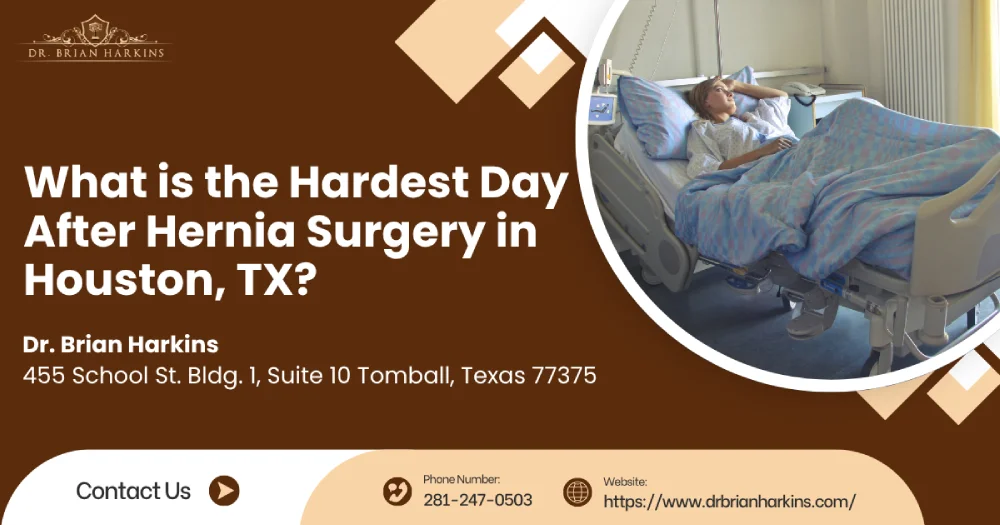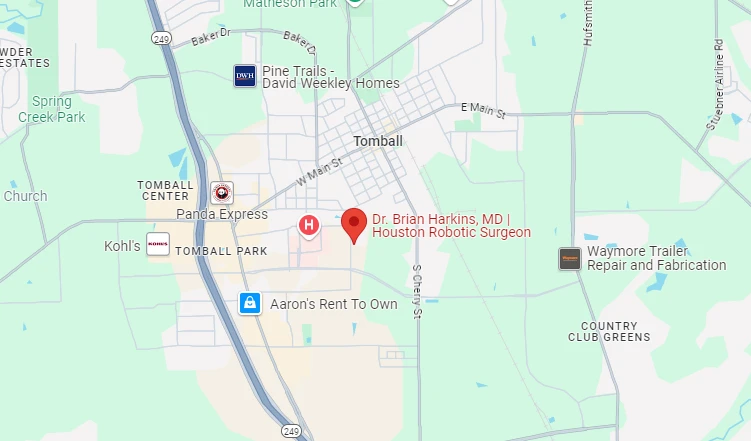
If you're facing hernia surgery in Houston, you're probably wondering: "Which day will hurt the most?"
Here's the straight answer from someone who's performed over 5,000 hernia repairs: Day 3 is typically the hardest day after hernia surgery for most patients. But here's what most surgeons won't tell you - understanding why this happens and what to expect can make all the difference in your recovery.
You'll feel surprisingly good. The nerve blocks and anesthesia are still working their magic. Most of my patients rate their pain at 2-3 out of 10. You might even think, "This isn't so bad!"
The anesthesia wears off completely. Pain increases to about 4-5 out of 10. You'll notice soreness when moving, coughing, or laughing. This is when many patients realize they need to take their recovery seriously.
This is it - the toughest day. Here's what's happening in your body:
Good news arrives. Pain starts decreasing noticeably. Most patients reduce their pain medication by half. You'll feel more like yourself again.
By day 7-10, most of my robotic surgery patients are back to light activities. Pain drops to 2-3 out of 10. Traditional surgery patients might still be at 4-5.
Here's where my approach makes a dramatic difference. Using the Da Vinci robotic system with my specialized low-pressure insufflation technique, my patients experience:
The precision of robotic surgery means less tissue trauma, smaller incisions, and faster healing. It's why I'm ranked in the top 1% nationally for robotic hernia repairs.
Every type of hernia—inguinal, umbilical, ventral, or traditional hernia of the groin—produces a fairly predictable recovery pattern, whether repaired through laparoscopic surgery, open surgery, or a hybrid laparoscopic-or-robotic technique. By comparing milestones below, you can gauge if your healing is on track.
| Day | Average Pain (1-10) | Main Sensations | Activity Goal | Pain-Relief Focus |
|---|---|---|---|---|
| 1 (Surgery) | 4–6 | Soreness, grogginess | Short hallway walk at hospital or home on the same day | Ice + prescription if needed |
| 2 | 6–7 | Sharp twinges, tightness | 5-10 min walks each hour | OTC + ice, abdominal binder |
| 3 | 7–8 (peak) | Swelling, muscle spasm | Same walks, gentle calf pumps | OTC on schedule, opioids only for breakthrough |
| 4 | 6–7 | Throbbing, bruise coloration | Light chores, shower if cleared | Taper opioids, continue NSAID |
| 5 | 5 | Dull ache | Desk work, longer walks | Heat for stiffness |
| 6-7 | 3–4 | Occasional twinges | Drive short distances, light activities | OTC only |
| 8 | 2–3 | Intermittent soreness | Cleared for very light exercise | As-needed OTC |
The body’s inflammatory cascade peaks 48 hours after abdominal surgery. Fluid surges to the affected area, nerves wake from anesthesia, and stitches tug when you first stand. After the third day, swelling recedes, nerves quiet, and you feel measurable relief—one reason so many patients can return to work at desk jobs about two weeks after surgery, depending on overall health and job demands.
Morning humidity often hits 80 % in Houston. Sweat evaporates slowly, raising core temperature and extending vasodilation in the abdominal wall. The result: more swelling around your fresh incision. Running indoor A/C at 72 °F, switching to moisture-wicking garments, and timing walks for dawn or dusk reduce the risk of prolonged inflammation.
Most laparoscopic or robotic repairs allow discharge from the hospital on the same day, while complex open hernia surgery occasionally requires an overnight stay. Either way, maintaining a cool environment once you get home is a key factor in quicker recovery after hernia surgery.
You can’t remove pain entirely, but you can keep it manageable and shorten the total healing time. Think of pain control as a multi-layered tool kit.
Light movement is proven to reduce the risk of blood clots and speed overall hernia surgery recovery. The key is to listen to your body and avoid strenuous activities until cleared.
Stop and call your surgeon if you feel sharp, stabbing pain during these movements—especially if it worsens instead of improves.
Even textbook recoveries can shift quickly. Reach out immediately if you notice any of the following warning signs following hernia surgery:
Most Houston practices keep a 24-hour line. Don’t hesitate—surgeons prefer early intervention over treating a late complication or hernia recurrence.
For most patients, the hardest day after hernia repair arrives between 48 and 72 hours. By staying cool in Houston’s humidity, following your doctor’s instructions, walking regularly, fueling with protein-rich foods, and monitoring for complications, you can turn those rough days into a short, manageable recovery period. Within two to three weeks you’ll likely resume normal activities, and with diligent care you’ll reduce the chance of hernia recurrence while enjoying a quick recovery compared to traditional open surgery.
For about 87% of patients, yes. Some experience peak pain on day 2 or 4, but day 3 is most common due to the inflammatory response timeline. With my robotic approach, even day 3 is typically manageable with just over-the-counter medications for most patients.
Mild to moderate tightness at two weeks often comes from internal sutures and early scar tissue. Light stretching, core-engagement breathing, and short walks help soften adhesions. However, growing tightness accompanied by bulging or sharp pain could signal a seroma or early recurrence—call your hernia surgeon if in doubt.
Lifting more than 10–15 lbs before four weeks risks straining the abdominal wall and disrupting mesh placement. If childcare is unavoidable, try seated cuddles instead of standing lifts. Many parents can safely resume heavier lifting at the six-week mark, but always follow your doctor’s customized recovery timeline.
Robotic hernia surgery uses small, wristed instruments that reduce tissue trauma and often result in less post-operative pain. While the first 72-hour peak remains, many patients report needing fewer pain medicines and returning to desk work a few days earlier compared to traditional hernia repair. Individual outcomes depend on overall health and the type of hernia.
Support the incision by splinting: place a small pillow or your hand over the affected area, tighten your core, then cough or sneeze. This simple move reduces internal pressure and helps avoid sudden strain on healing tissues, particularly important during the earliest days following surgery.
You may drive once you are off prescription pain killers, can twist comfortably to check blind spots, and can perform an emergency stop without discomfort—usually around days 5–7. Longer commutes might still cause fatigue; consider short trips first to gauge your stamina.
Yes. Gas retention from anesthesia plus decreased gut movement can cause bloating. Walking, warm tea, and a fiber-rich diet help restore normal motility. Severe swelling, ongoing nausea, or vomiting should be evaluated promptly to rule out bowel involvement or other complications.
Light jogging may be safe at the four-week point if pain is minimal and your surgeon approves. Start with flat terrain and short intervals, wearing supportive clothing. Any sharp or lingering discomfort means you should scale back to brisk walking and re-assess with your physician.
Excess abdominal fat increases intra-abdominal pressure, stressing the repair site and raising recurrence risk. A balanced diet, regular low-impact exercise, and weight control after healing greatly improve long-term success, whether your surgery was open, laparoscopic, or robotic.
Small nerve branches cut during hernia surgeries can misfire for months as they regenerate, leading to brief, mild twinges. Most resolve by six to nine months. Persistent or worsening pain should be investigated, especially if accompanied by a palpable bulge or visible swelling.


Dr. Brian Harkins is a renowned surgeon specializing in advanced, minimally invasive, and robotic surgical techniques. With a dedication to innovation and personalized patient care, he has transformed countless lives by delivering exceptional outcomes.

I want a website like this, where do i start?